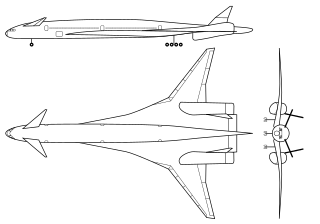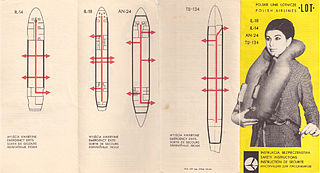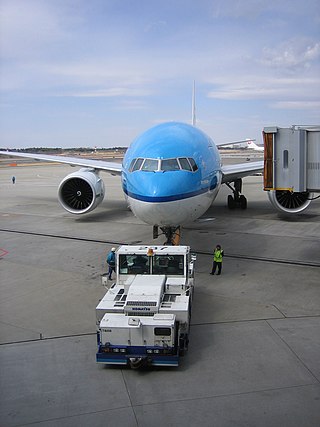Virgin Atlantic, a trading name of Virgin Atlantic Airways Limited and Virgin Atlantic International Limited, is a British airline with its head office in Crawley, West Sussex, England. The airline was established in 1984 as British Atlantic Airways, and was originally planned by its co-founders Randolph Fields and Alan Hellary to fly between London and the Falkland Islands. Soon after changing the name to Virgin Atlantic Airways, Fields sold his shares in the company to Richard Branson in return for unlimited free travel. The maiden flight from London–Gatwick to Newark took place on 22 June 1984.

Elbert Leander "Burt" Rutan is a retired American aerospace engineer and entrepreneur noted for his originality in designing light, strong, unusual-looking, and energy-efficient air and space craft. He designed the record-breaking Voyager, which in 1986 was the first plane to fly around the world without stopping or refueling. He also designed the Virgin Atlantic GlobalFlyer, which in 2006 set the world record for the fastest and longest nonstop non-refueled circumnavigation flight in history. In 2004, Rutan's sub-orbital spaceplane design SpaceShipOne became the first privately funded spacecraft to enter the realm of space, winning the Ansari X-Prize that year for achieving the feat twice within a two-week period.

The Boeing Sonic Cruiser was a concept jet airliner with a delta wing–canard configuration. It was distinguished from conventional airliners by its delta wing and high-subsonic/transonic cruising speed of up to Mach 0.98. Boeing first proposed it in 2001, but airlines generally preferred lower operating costs over higher speed. Boeing ended the Sonic Cruiser project in December 2002 and shifted to the slower but more fuel-efficient 7E7 airliner.

A reduced-gravity aircraft is a type of fixed-wing aircraft that provides brief near-weightless environments for training astronauts, conducting research, and making gravity-free movie shots.

Space adaptation syndrome (SAS) or space sickness is a condition experienced by as many as half of all space travelers during their adaptation to weightlessness once in orbit. It is the opposite of terrestrial motion sickness since it occurs when the environment and the person appear visually to be in motion relative to one another even though there is no corresponding sensation of bodily movement originating from the vestibular system.

The Scaled Composites Model 311 Virgin Atlantic GlobalFlyer is an aircraft designed by Burt Rutan in which Steve Fossett first flew a solo nonstop airplane flight around the world in slightly more than 67 hours in 2005. The flight speed of 342 miles per hour (550 km/h) set the world record for the fastest nonstop non-refueled circumnavigation, beating the mark set by the previous Rutan-designed Voyager aircraft at 9 days 3 minutes with an average speed of 116 miles per hour (187 km/h).

An aircraft safety card is a document instructing passengers on an aircraft about the procedures for dealing with various emergency conditions that might arise during the flight.
Airsickness is a specific form of motion sickness which is induced by air travel and is considered a normal response in healthy individuals. Airsickness occurs when the central nervous system receives conflicting messages from the body affecting balance and equilibrium. Whereas commercial airline passengers may simply feel poorly, the effect of airsickness on military aircrew may lead to a decrement in performance and adversely affect the mission.

Zip was a Canadian discount airline headquartered in Hangar 101 at Calgary International Airport, Calgary, Alberta. It was launched by Air Canada as a no-frills subsidiary in September 2002. It operated a fleet of 12 Boeing 737 aircraft, each painted in a bright, neon colour with a single class of service. The subsidiary was headed by former WestJet CEO, Steve Smith.

In the airline industry, a baggage handler is a person who loads and unloads baggage, and other cargo for transport via aircraft. With most airlines, the formal job title is "fleet service agent/clerk", though the position is commonly known amongst airline employees as a "ramp agent", due to the job's location on the airport ramp (tarmac).

A paper bag is a bag made of paper, usually kraft paper. Paper bags can be made either with virgin or recycled fibres to meet customers' demands. Paper bags are commonly used as shopping carrier bags and for packaging of some consumer goods. They carry a wide range of products from groceries, glass bottles, clothing, books, toiletries, electronics and various other goods and can also function as means of transport in day-to-day activities.

The term hand luggage or cabin baggage refers to the type of luggage that passengers are allowed to carry along in the passenger compartment of a vehicle instead of a separate cargo compartment. Passengers are allowed to carry a limited number of smaller bags with them in the vehicle, which typically contain valuables and items needed during the journey. There is normally storage space provided for hand luggage, either under seating, or in overhead lockers. Trains usually have luggage racks above the seats and may also have luggage space between the backs of seats facing opposite directions, or in extra luggage racks, for example, at the ends of the carriage near the doors.

In aviation, pushback is an airport procedure during which an aircraft is pushed backwards away from its parking position, usually at an airport gate by external power. Pushbacks are carried out by special, low-profile vehicles called pushback tractors or tugs.

An electronic flight bag (EFB) is an electronic information management device that helps flight crews perform flight management tasks more easily and efficiently with less paper providing the reference material often found in the pilot's carry-on flight bag, including the flight-crew operating manual, navigational charts, etc. In addition, the EFB can host purpose-built software applications to automate other functions normally conducted by hand, such as take-off performance calculations. The EFB gets its name from the traditional pilot's flight bag, which is typically a heavy documents bag that pilots carry to the cockpit.

Airport check-in is the process whereby an airline approves airplane passengers to board an airplane for a flight. Airlines typically use service counters found at airports for this process, and the check-in is normally handled by an airline itself or a handling agent working on behalf of an airline. Passengers usually hand over any baggage that they do not wish or are not allowed to carry in the aircraft's cabin and receive a boarding pass before they can proceed to board their aircraft.

An aircraft lavatory or plane toilet is a small unisex room on an aircraft with a toilet and sink. They are commonplace on passenger flights except some short-haul flights. Aircraft toilets were historically chemical toilets, but many now use a vacuum flush system instead.

A reusable shopping bag, sometimes called a bag for life in the UK, is a type of shopping bag which can be reused many times, in contrast to single-use paper or plastic shopping bags. It is often a tote bag made from fabric such as canvas, natural fibres such as jute, woven synthetic fibers, or a thick plastic that is more durable than disposable plastic bags, allowing multiple use. Other shoppers may use a string bag or a wheeled trolley bag. They are often sold in supermarkets and apparel shops.
Gilmore Tilmen Schjeldahl was an American businessman and inventor in plastics, adhesives and circuitry. He was awarded 16 US patents and may be best known for inventing the plastic-lined airsickness bag. He also founded the Schjeldahl Company, which designed and built Echo I, and worked on Echo II, Project Stargazer, Stratascope II, and PAGEOS. He had five children, including Peter Schjeldahl, a notable art critic, poet, and educator. Schjeldahl died on March 10, 2002, at his home in Lenox, Massachusetts, after battling Alzheimer's disease for many years.
The Air Sickness Bag Virtual Museum is a collection of 3,112 air sickness bags collected by museum curator Steven J. Silberberg. The museum is entirely online, with photographs of the various air sickness bags; however, the actual collection is stored at Silberberg's residence. Silberberg himself has stated that he has never flown long distances.















